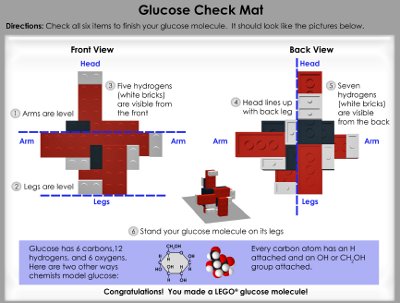
Monday, October 31, 2011
Happy Halloween
I apologize for the gaps in posting. Anyway, I wanted to do something holiday themed, but wasn't sure what to choose. I considered putting up a LEGO Frankenstein scene, since Dr. Frankenstein is kind of the ultimate mad scientist, but wanted to do something a little more 'real science'. So I thought: what do kids get tons of at Halloween? Sugar! So I found this. MIT sponsor the Mind and Hand Alliance to get kids excited about science. In one exercise, they use LEGO to build models of molecule, and here and here they have instructions to build glucose, one of the key sugars in biochemical processes. Technically table sugar is actually sucrose, which is a combination of glucose and fructose, but there you go. There model making is interesting - they use black, white and red LEGO bricks to represent carbon, hydrogen and oxygen, which are kind of the standard colors used in molecular models (atoms don't actually have colors, of course), and they represent carbon and oxygen as being the same size and hydrogen as smaller. They also have some sense in their model of stereochemistry, with some groups pointing up and others down, as is also true of real molecules. The ultimate result is not very satisfying to me, though, since the rectangular shapes imposed by the LEGO bricks don't lead a shape that closely fits the real molecule. But if it gets kids thinking about molecules, though, I'm all for it. I've noted here before that in part I am a chemist today because of building with LEGO as a kid.


Monday, October 24, 2011
Acrylonitrile
I've previously discussed polymers. A polymer is a long chain made up of repeated molecules linked together. The plastic that makes up LEGO bricks is ABS, a compound polymer made of three different parts. Nathan Proudlove was originally going to produce all of these in brick form, but due to the size of the project limited himself to a beautiful rendition of acrylonitrile. The black spheres represent carbon atoms, the white are hydrogens, and the blue sphere is a nitrogen. You can also see that two of the carbons are connected by a double bond (two pairs of shared electrons), and the carbon and nitrogen are connected by a triple bond (three pairs).
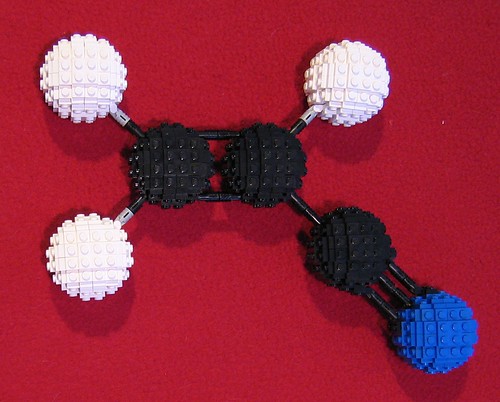

Wednesday, October 12, 2011
Yuri Gagarin
Fifty years ago this year, Yuri Gagarin climbed into the Vostok 3KA capsule and was launched atop a Vostok 8K72K rocket into space. 108 minutes later he had made a complete orbit of the Earth and returned to earth via parachute. Apparently he landed near a farmer and daughter, and he later recalled "When they saw me in my space suit and the parachute dragging alongside as I walked, they started to back away in fear. I told them, don't be afraid, I am a Soviet like you, who has descended from space and I must find a telephone to call Moscow!" Gary Davis made this amazing bust.

Bono1900 made Gagarin and his rocket.
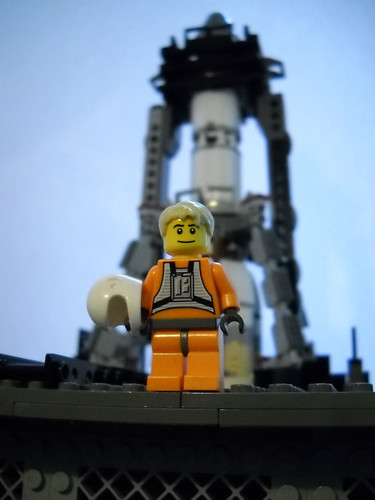
Morgan190 put together this minifig.
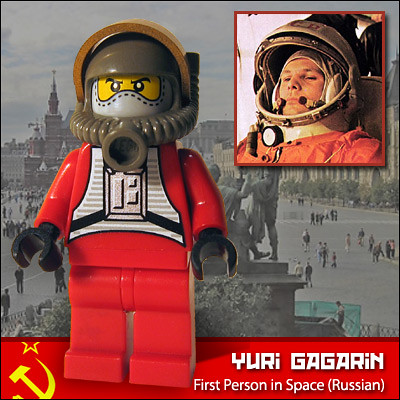

Bono1900 made Gagarin and his rocket.

Morgan190 put together this minifig.

Wednesday, October 5, 2011
Hayabusa
I've previously noted the Japanese Hayabusa probe that was sent out to retrieve samples from an asteroid. It turns out LEGO is going to be making an official set (available in Japan only, though, I believe) of this probe.

This is part of the LEGO Cuusoo project, that was piloted in Japan but is now coming to the internet near you. People can submit ideas and then vote on what they'd like to see LEGO produce as a set. I'm not 100% sure, but I think that LEGO designers take the original idea and rework it into a set, rather than simply taking submitted designs. Anyway, the previously noted Shinkai 6500 ocean probe was also produced via LEGO Cuusoo. Interesting that the first two projects that came through this program were science themed. I believe that these may have been prototype designs.
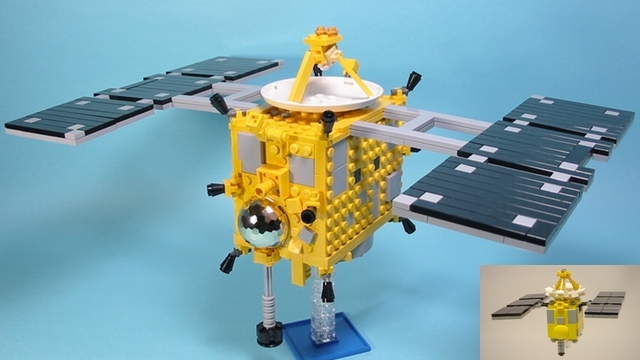

This is part of the LEGO Cuusoo project, that was piloted in Japan but is now coming to the internet near you. People can submit ideas and then vote on what they'd like to see LEGO produce as a set. I'm not 100% sure, but I think that LEGO designers take the original idea and rework it into a set, rather than simply taking submitted designs. Anyway, the previously noted Shinkai 6500 ocean probe was also produced via LEGO Cuusoo. Interesting that the first two projects that came through this program were science themed. I believe that these may have been prototype designs.

Subscribe to:
Posts (Atom)